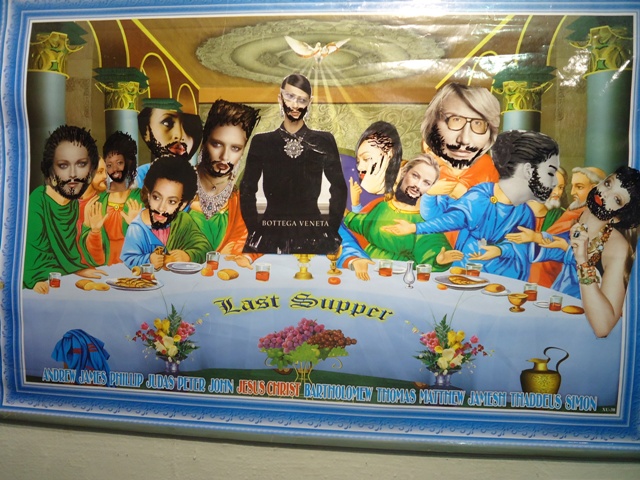By Daisy Nandeche Okoti
Published August 29, 2014
![]()
The history of every African country tends to be divided into three periods: before colonialism, colonialism and after independence. Since the history of colonialism in Africa is usually told from the perspective of the Africans (read, black people), the perceptions that inform the concept of colonialism in Africa is that of the colonial trinity; the Explorer, the Missionary, and the Settler/Trader/Imperialist.
RELATED: Why and How Africa Must Focus on Producing High Quality Films
 But just as there is never a single story about anything, alternative narratives about the European colonisation of Africa also exist. One such narrative is a 70-minute documentary—BEAUTIFUL TREE, SEVERED ROOTS—by Kenya-born, US-based Kenny Iki Mann that is set for screening and discussion during the 79th monthly gathering of what is billed as Nairobi’s premier critical film platform, Lola Kenya Screen film forum (LKSff) at Goethe-Institut, on September 29, 2014.
But just as there is never a single story about anything, alternative narratives about the European colonisation of Africa also exist. One such narrative is a 70-minute documentary—BEAUTIFUL TREE, SEVERED ROOTS—by Kenya-born, US-based Kenny Iki Mann that is set for screening and discussion during the 79th monthly gathering of what is billed as Nairobi’s premier critical film platform, Lola Kenya Screen film forum (LKSff) at Goethe-Institut, on September 29, 2014.
BEAUTIFUL TREE, SEVERED ROOTS is a film about Mann’s Polish and Romanian secular Jew parents who fled Europe in 1939 to settle in Kenya in 1942.
RELATED: Nairobi’s Public Court Over-rules Gate-keepers, Pulls down Offensive Artwork
Born and raised in Kenya up to the age of 22, Mann says her film is about her parents’ lives, “about being the daughter of such parents, living multiple lives as a reluctant Jew; a white person in an African country; an anti-colonialist in a British Colony; a ‘fake’ Brit in an Eastern European family.” It also examines how the children and grand children of Igor and Erica Mann have forged their own identities as â’white Africans’.
 BEAUTIFUL TREE, SEVERED ROOTS—that is shot in Kenya, Poland and Romania—is set against the backdrop of the lives of Igor and Erica Mann and their family between the MAU MAU uprising of 1952 and Independence in 1963. Like a history book, the film is divided into six chapters based on live and archival footage.
BEAUTIFUL TREE, SEVERED ROOTS—that is shot in Kenya, Poland and Romania—is set against the backdrop of the lives of Igor and Erica Mann and their family between the MAU MAU uprising of 1952 and Independence in 1963. Like a history book, the film is divided into six chapters based on live and archival footage.
The documentary tells the story of a ‘white’ family at a time when it was thought that all ‘whites’ in the country were having all the roses while native Kenyans got the thorns.
As professionals (Kenny Mann’s father Igor was a veterinarian and her mother, Erica, an architect) the film shows how Mann’s parents invested their youth and skills in the service of Kenya.
In the film, Kenny Mann’s family is presented as an ordinary Kenyan family and save for their skin color, there is nothing about their lifestyle that suggests that they are foreigners. The challenges that the family goes through such as identity crisis and uncertainty when the political temperatures begin to rise as Kenya gears towards independence is something that sets the story of Kenny Mann’s family apart as a story that should be watched and heard alongside Kenya’s history books because it is a window through which the learners get a glimpse of the other kind of ‘mzungu’ during the colonial era. This Mzungu doesn’t condemn African ways of worship as barbaric, doesn’t demand that Africans learn ‘Mzungu’ language and doesn’t even try to change the ‘black’ person’s way of dressing. Instead, the ‘Mzungu’ goes to the African’s shrine for worship, learns the African’s language and when the ‘Mzungu’ dies, Africans accord ‘him’ a hero’s send off.
RELATED: Senegalese Art Gallery Vandalised and Forced to Close for Hosting Gay-Related Exhibition
Mann, who narrates the story, starts with her own introduction before the narrative takes the viewer back to the story of her parents in Europe and Africa and then the shifts to the lives of her sister and brother, both of whom have taken to the African culture so passionately. Later on in life when Mann and her siblings have children who are old enough to understand the debate of identity, they, too, are thrown into the spin of confusion because they have never fully understood who they are. In other words, the ‘humanization’ of the white settlers without being defensive is a quality that is likely to endear this film to its audience.

The film begins with a prologue which in away, tells the audience what to anticipate without giving away the story. And as if to push forward the envelop of the similarity between a book and a movie, an element that is witnessed throughout the film, the documentary is divided into six chapters and they all begin with quotations that, like the main prologue, attempt to tell the audience what to expect. The use of the journalistic technique (mentioning of time, place and year when a particular event is taking place) also gives off the film as more of a written endeavor than it is a shooting one. As a style, this technique benefits the audience because of the continuous shifts in scenes and this naming enables them to keep up with the flow of the story.
RELATED: Nigeria Turns to Film to Define Her Identity, Character, Image and Influence
 Wild animals, birds and even the sky have been used in the film to explain the shifting moods at various stages in the film: energetic ostriches running to signify the energetic teenage years of Kenny Mann, darkening clouds in the sky to show the deepening political uncertainty in the country during the MAU MAU rebellion and so on. Such scenes add to the captivating and arresting qualities of the film.
Wild animals, birds and even the sky have been used in the film to explain the shifting moods at various stages in the film: energetic ostriches running to signify the energetic teenage years of Kenny Mann, darkening clouds in the sky to show the deepening political uncertainty in the country during the MAU MAU rebellion and so on. Such scenes add to the captivating and arresting qualities of the film.
Other stylistic devices employed in the film include the use of cultural songs and dances as well as light humour that punctuates the film to the end. The narrator also tells the story with child-like innocence; instead of drawing conclusions for the audience, she asks questions. This technique is witnessed especially when narrating the story around politics. Since she does not fully understand the relationship her father has with the political leaders of the time who visit their home, she gives her testimony in the documentary and leaves the rest upon the audience.
RELATED: Brazil-Africa Connection Examined through Multi-Media Exhibition





